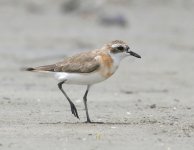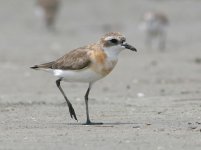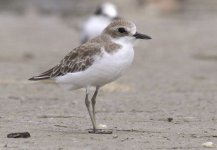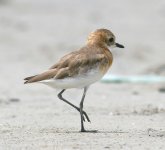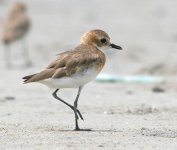Dave B
Well-known member
Some Sand Plovers are very easy to pick out as Greater or Lesser, but there are others that leave me quite confused.
Here's a case in point. The majority of Lessers we get here are the long-billed schaeferi race.
Interested to what you think this is and why. Pictures taken today in Penang, Malaysia.
Cheers,
Dave
Here's a case in point. The majority of Lessers we get here are the long-billed schaeferi race.
Interested to what you think this is and why. Pictures taken today in Penang, Malaysia.
Cheers,
Dave




